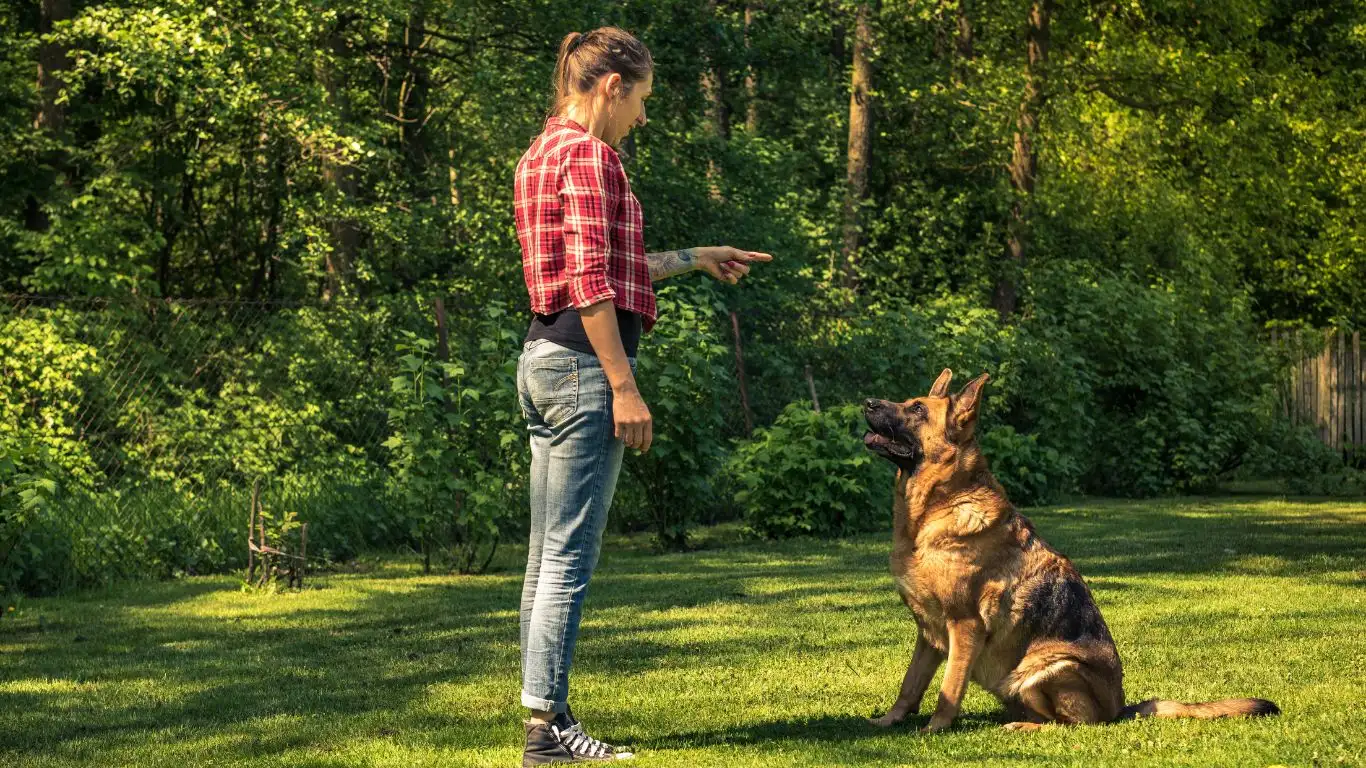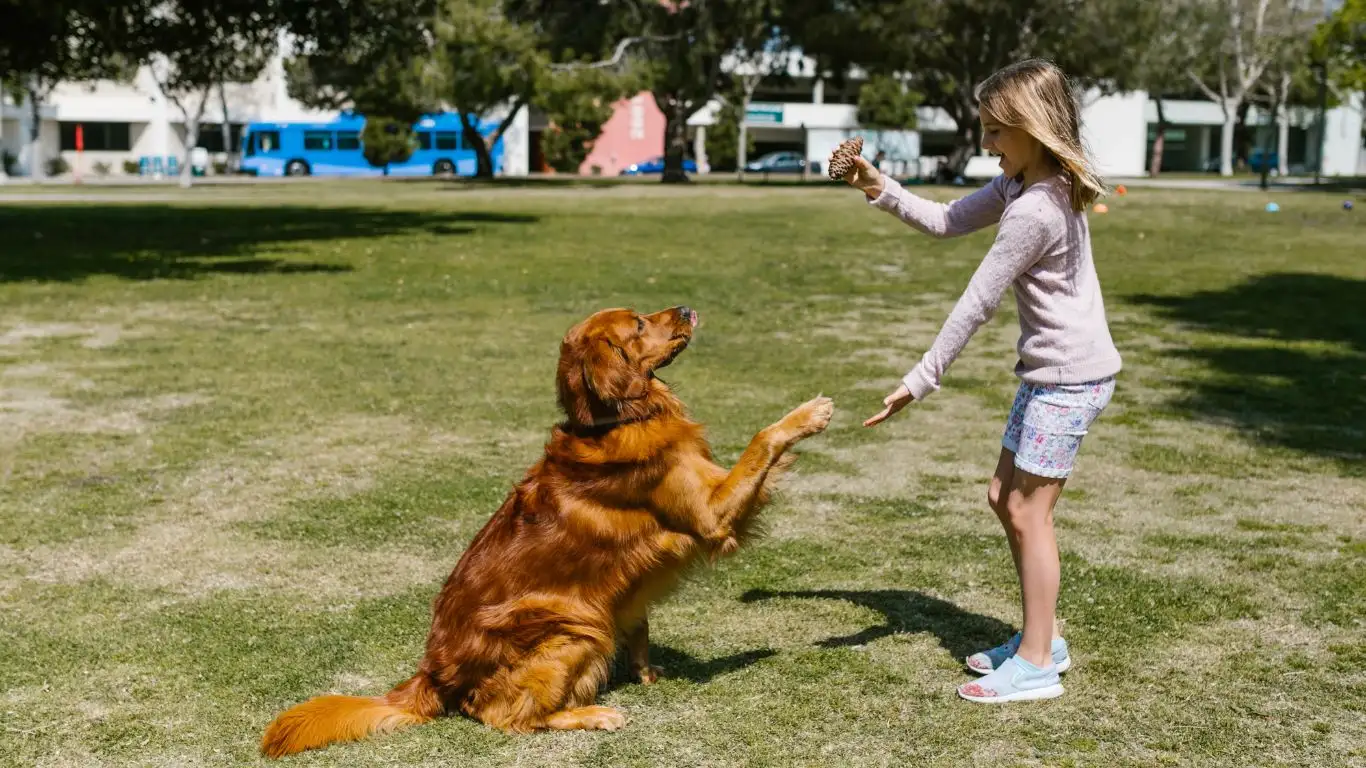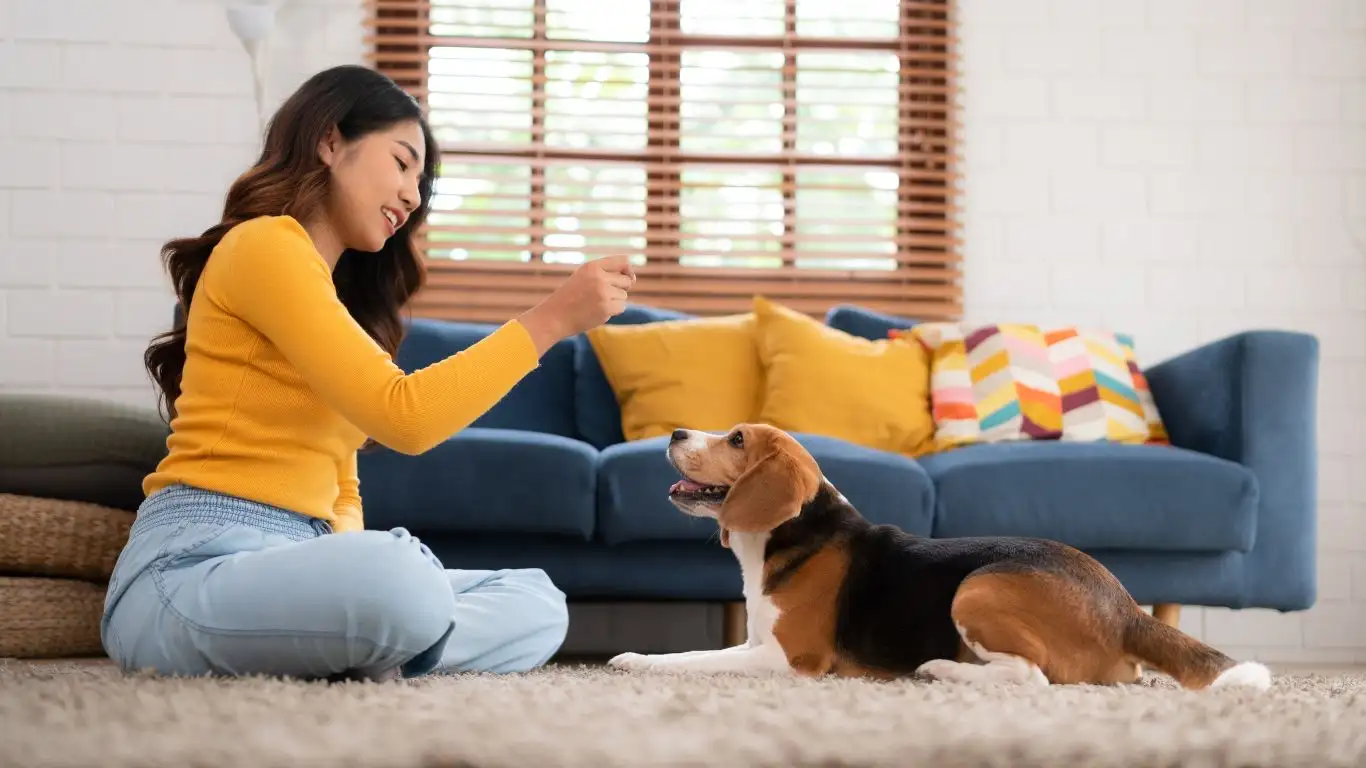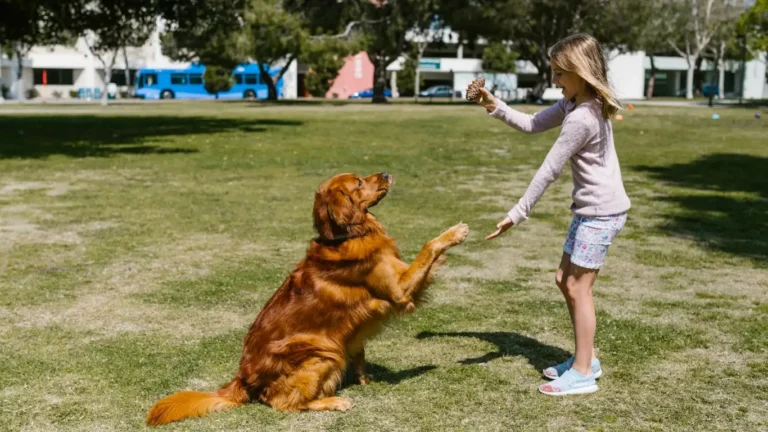Stop Your Dog Barking at Outside Noises – Simple, Effective Training Tips
If you’ve ever found yourself asking how to train a dog to stop barking at noises outside, you’re not alone. As a Canine-Assisted Therapy Trainer, I have worked with countless pet owners dealing with the same issue. Whether it’s the sound of a passing car, the doorbell ringing, or a neighbor walking by, dogs have an instinctive reaction to the world around them. But don’t worry, it’s not impossible to help your dog learn to stay calm when those outside noises trigger their barking. In this guide, I’ll walk you through some tried and true methods based on my personal experience that will help you manage this behavior and teach your dog how to relax when the world gets noisy. So, let’s dive in and explore how you can get your dog to stop barking at noises outside once and for all.
Understanding the Cause of Your Dog’s Barking

Before we get into training tips, it’s important to understand why your dog is barking in the first place. Dogs bark for many reasons, and understanding the cause of the barking will guide you in addressing it effectively. In my experience, there are a few key reasons dogs tend to bark at noises outside:
- Territorial behavior: Dogs often see their home and yard as their territory. When they hear unfamiliar sounds outside, they may bark to protect it, letting you know there’s something or someone they believe is encroaching on their space.
- Anxiety or fear: Some dogs become anxious or frightened by noises they don’t understand. Whether it’s thunder, a car door slamming, or the footsteps of a person outside, these unfamiliar sounds can trigger a barking response.
- Lack of exposure: If your dog hasn’t had much exposure to certain sounds or situations, they may react by barking out of confusion or uncertainty.
- Excitement: For some dogs, the sound of something outside could simply be exciting. They might bark in anticipation of what’s coming next, whether it’s a walk, a visitor, or another form of stimulation.
Once you have an understanding of why your dog is barking at the noises outside, you can begin to address the behavior in a more effective and tailored way.
How to Train a Dog to Stop Barking at Noises Outside: Step-by-Step

1. Provide Positive Reinforcement for Calm Behavior
When it comes to training, positive reinforcement is always one of the most effective tools. The key is to reward your dog for staying calm and quiet when they hear a noise outside, rather than punishing them for barking. Punishment can cause stress and confusion, which often leads to more barking or behavioral problems in the future. Instead, focus on reinforcing calm behavior.
Here’s how you can do it:
- Start by desensitizing your dog to common outside noises: Use recordings of typical outside sounds, such as cars, sirens, or the mailman’s footsteps, and play them at a low volume. If your dog remains calm, reward them with praise, treats, or their favorite toy. Gradually increase the volume over time as your dog becomes more comfortable.
- Use the “quiet” command: When your dog barks at a noise, calmly say “quiet” in a firm but non-aggressive tone. When they stop barking, immediately reward them with a treat and praise. Consistency is key here—each time they stop barking, reward them for their good behavior.
- Be patient: It may take time for your dog to learn that barking isn’t the way to get attention or reward. Consistent and gentle training is essential.
2. Create a Safe, Calm Environment for Your Dog
Some dogs bark because they feel overwhelmed or scared by the noises outside. One of the most effective ways to help your dog stop barking at these sounds is to create a calm environment that encourages relaxation and reduces anxiety. In my experience, dogs are much more likely to stop barking if they feel secure and safe.
Here are a few tips for creating a peaceful environment:
- Limit access to windows: If your dog is barking because they can see people or other animals outside, consider limiting their access to windows where they can see out. Use curtains or blinds to block the view and reduce visual stimulation.
- Provide a cozy space: Dogs need a space where they can retreat when they feel overwhelmed. Set up a comfortable area in your home with their bed, toys, and perhaps some calming music to help them feel more at ease.
- Use calming aids: There are various calming products on the market, such as anxiety wraps, pheromone diffusers, or calming music specifically designed for dogs. These can help reduce your dog’s stress levels, making them less likely to bark.
3. Use Desensitization and Counter-Conditioning Techniques
Desensitization and counter-conditioning are two powerful techniques that can help your dog stop barking at outside noises. Essentially, you’ll be gradually exposing your dog to the sound that triggers their barking while pairing it with something positive. Over time, your dog will learn to associate the noise with something pleasant, rather than something to bark at.
Here’s how to use these techniques:
- Start with a low-volume version of the sound: As I mentioned earlier, begin by playing a recording of the noise your dog reacts to, but at a very low volume. Pair this with a treat or positive interaction. The goal is to create a calm association with the sound.
- Gradually increase the volume: Slowly increase the volume of the noise over several sessions. Always make sure that your dog remains calm before rewarding them.
- Change the context: Once your dog is calm at the lower volume, try playing the sound when they are distracted with something positive, like a chew toy or a training session. This helps them focus on something other than the sound itself.
Desensitization and counter-conditioning can take time, so don’t expect immediate results. But with patience and persistence, you’ll see progress.
Why Consistency Is Key

Training your dog to stop barking at noises outside isn’t a quick fix, and it requires consistent effort from you. Dogs thrive on routine and repetition, so the more consistent you are with your training, the better the results will be. It’s important to stay patient and not give up if progress seems slow. Keep reinforcing the calm behavior you want to see, and your dog will begin to associate quiet with positive outcomes. Over time, your dog will learn to stop barking at outside noises and start enjoying a calmer, quieter home environment.
By implementing these techniques and staying consistent, you’ll be well on your way to helping your dog relax and stop barking at those outside sounds. And remember, every dog is different, so it’s okay to adjust your approach depending on your dog’s unique needs and temperament. With some time, patience, and positive reinforcement, you’ll be able to achieve success and enjoy a peaceful home once again.
Addressing Underlying Anxiety or Fear in Your Dog

As we discussed in Part 1, some dogs bark at outside noises due to anxiety or fear. This is a particularly important issue to address, as anxiety can lead to a range of other behavioral problems if not managed correctly. In my experience, dogs that bark excessively because of fear are often trying to alert you to something that they feel threatened by, but they don’t have the tools to cope with the fear in a calm manner. Luckily, with a little time and effort, we can help them overcome their anxiety and stop barking at outside sounds.
Here are a few techniques that have worked well in my practice:
- Desensitize Your Dog to the Triggering Noise: This technique is similar to what we discussed in Part 1, but when fear is the root cause, it’s crucial to go at your dog’s pace. If they are scared of a specific noise, such as fireworks or traffic, start by playing the sound at a very low volume. Over time, you can gradually increase the volume, all the while rewarding your dog for calm behavior. This helps them associate the sound with positive experiences, which can ease their anxiety.
- Comfort Your Dog Without Reinforcing the Fear: It’s natural to want to comfort your dog when they are frightened, but it’s important not to overdo it in a way that reinforces the anxious behavior. Instead of coddling them when they bark or act fearful, try calmly redirecting their attention to something else, like a treat or a favorite toy. This helps them learn that there’s no need to be scared or vocal about the noise.
- Consider Professional Help: Sometimes, anxiety may require professional intervention. If your dog’s anxiety seems severe or persistent, it may be worth working with a certified canine behaviorist or a vet who specializes in behavior. Medication or more advanced behavioral therapy can sometimes be a necessary part of the solution for dogs with severe anxiety.
Training Tools That Can Help Stop Barking at Outside Noises

Training a dog to stop barking at noises outside requires not only the right techniques but also the right tools. There are several products and devices available that can help reinforce training and calm your dog. While training alone is effective, these tools can help support the process and make it easier for both you and your dog.
Here are a few tools I recommend based on my own experience working with dogs:
- Anti-Bark Collars: While I always suggest using positive reinforcement as the first line of training, anti-bark collars can sometimes be useful for certain dogs that struggle with impulse control. These collars work by emitting a mild sensation (like a vibration or a sound) when the dog barks excessively. It’s important to use these collars as part of a broader training plan, and never as the sole method. They should never cause pain or distress to your dog.
- Pheromone Diffusers: Pheromone diffusers release a calming scent that mimics the natural calming pheromones dogs release when they are feeling safe. These products can help reduce anxiety and stress in your dog, which is especially beneficial if outside noises are causing fear-based barking. I’ve seen great results with these diffusers when paired with training techniques.
- Interactive Toys: Providing your dog with interactive toys or puzzle feeders is a great way to distract them from the sounds outside. This not only engages their brain but also helps them to focus on something other than the noise. The more your dog can concentrate on a positive activity, the less likely they are to bark out of boredom or anxiety.
- Soundproofing Your Home: If the noises outside are especially loud or frequent, it might be worth investing in some basic soundproofing measures for your home. Adding rugs, curtains, or window inserts can help reduce the volume of external sounds, making it easier for your dog to relax.
Consistency and Patience: The Keys to Success

One of the most important things to remember throughout this training process is that consistency and patience are essential. Dogs learn best through repetition, and the more consistent you are with your training, the faster your dog will understand what is expected of them. This is a principle I always emphasize to pet owners in my therapy sessions because it’s easy to get frustrated when progress is slow.
In my experience, one of the most common mistakes pet owners make is to stop training too early. Dogs, like people, need time to absorb new information and develop new habits. You may have moments of success where your dog stops barking at outside noises, but then suddenly the behavior returns. This is completely normal and should be expected. The key is not to give up—continue reinforcing the positive behaviors, and your dog will eventually catch on.
It’s also important to recognize that some dogs take longer to adjust than others. If you have a dog that’s particularly anxious or fearful, the training process may take more time. However, with consistent effort and the right tools, most dogs can learn to stop barking at outside noises. Over time, you’ll see improvements, and your dog will become more relaxed and less reactive to external sounds.
What to Do When Progress Seems Slow
Sometimes, despite your best efforts, progress can seem slow. If you’ve been working with your dog for a while and aren’t seeing the results you want, don’t be discouraged. This is often a sign that you might need to reassess your training methods or adjust your approach.
Here are a few things to consider if you’re feeling stuck:
- Reevaluate Your Training Sessions: Are you being consistent enough? Are the sessions too long or too short? Dogs often do better with short, frequent training sessions that last about 5-10 minutes each, rather than long, drawn-out sessions.
- Use More Reinforcement: If your dog is having trouble understanding the desired behavior, increase the frequency of your rewards. Positive reinforcement works best when your dog is rewarded immediately after exhibiting the correct behavior.
- Consult a Professional: If you’ve tried everything and progress is still slow, it might be time to consult a professional dog trainer. Sometimes an outside perspective can reveal new techniques or adjustments that you may not have considered.
Remember, training is a journey. With the right tools, consistency, and a little bit of patience, your dog can learn to stop barking at noises outside and start living a calmer, more peaceful life. Keep going, and don’t be afraid to adjust your methods along the way!
Maintaining Long-Term Success: Ensuring Your Dog Stays Calm Over Time

Once you’ve successfully trained your dog to stop barking at noises outside, it’s crucial to maintain the progress you’ve made. The last thing you want is for your dog to revert to old behaviors as time goes on. Consistency, as we’ve emphasized before, is key—not just during the initial stages of training, but also in the long term.
In my experience, maintaining long-term success often means continuing to reinforce the behaviors you want to see, even after your dog seems to have mastered the technique. It’s like any other skill—they need to practice regularly to stay sharp. Here are some tips for ensuring your dog’s calmness lasts:
- Regularly Refresh Training Sessions: Even after your dog has learned to stay calm, it’s helpful to keep up with brief, refresher training sessions. These sessions don’t need to be long—just a few minutes a couple of times a week can help maintain the calm behaviors and prevent them from getting too comfortable with slipping back into old habits.
- Introduce New Noises Gradually: If your dog has become immune to certain noises, introduce new sounds at a low volume to prevent them from becoming complacent. The goal is to keep your dog on their toes without overwhelming them.
- Reward Calm Behavior Consistently: Keep rewarding your dog for calmness in response to noise. This will help reinforce that staying quiet is still the behavior that gets them rewarded. The more you reward calm behavior, the more your dog will understand that it’s the desirable response.
Managing Special Cases: What If My Dog Still Barks at Outside Noises?

In some cases, despite your best efforts, your dog may continue barking at outside noises. If that’s happening to you, don’t get discouraged—there are still a few strategies you can try. Sometimes, dogs have deeply ingrained habits, or the external stimuli might be more intense than you anticipated. Whatever the reason, there are steps you can take to address the issue.
Here’s what you can do:
- Increase Mental and Physical Stimulation: Sometimes barking is a sign of boredom or pent-up energy. Make sure your dog is getting enough exercise and mental stimulation. If your dog is active, they’re less likely to fixate on the noises outside. You can try introducing new toys, longer walks, or even agility training to keep their mind and body engaged.
- Use Positive Distraction Techniques: When your dog hears an outside noise and begins to bark, try distracting them with something they love. This could be a favorite toy, a tasty treat, or even a training session. The key is to redirect their attention away from the noise and onto something positive, reinforcing the idea that they don’t need to react to the sound.
- Consult a Professional Trainer: If the barking persists despite your efforts, it might be time to seek out a professional dog trainer or behaviorist. In some cases, the barking could be due to more complex behavioral issues that require expert intervention. A trainer can offer personalized advice and new techniques that may help address the issue more effectively.
Health Considerations: Is Excessive Barking a Sign of a Deeper Issue?
While barking at noises outside is often behavioral, there could be underlying health issues that contribute to excessive barking. As a trainer, I’ve seen cases where dogs bark excessively due to hearing impairments, anxiety disorders, or even pain. If you’ve been following the training techniques and haven’t seen any progress, it’s worth considering whether your dog’s barking could be related to a health issue.
If your dog’s barking seems abnormal or excessive, it’s always a good idea to consult your veterinarian. They can perform a thorough examination to rule out any medical issues that may be causing your dog to bark excessively. Here are some health-related concerns to consider:
- Hearing Problems: Older dogs or dogs with hearing impairments may bark at sounds they can’t properly interpret. If your dog’s barking is sporadic or seems random, they may be hearing things differently. Your vet can help assess whether this is a factor.
- Anxiety Disorders: Some dogs suffer from separation anxiety or generalized anxiety, which can cause them to bark at sounds, even when there’s nothing physically threatening. If you suspect your dog’s barking is related to anxiety, a vet may suggest calming medications or behavioral therapy.
- Pain or Discomfort: If your dog seems more agitated than usual, or if their barking is accompanied by other signs of distress, such as limping or changes in behavior, it could be a sign of pain. It’s always best to consult with a veterinarian if you suspect this might be the case.
When to Seek Expert Help
As much as we want to be the ones to solve every challenge our dogs face, sometimes it’s necessary to call in the experts. In cases where barking at outside noises is persistent, or when it’s accompanied by other signs of behavioral or health issues, consulting with a professional dog trainer, behaviorist, or veterinarian can make all the difference.
Working with a professional can offer several benefits:
- Expert Guidance: Professional trainers can offer tailored strategies for addressing your dog’s specific needs. They can identify any underlying issues you may not have noticed and create a comprehensive training plan.
- Faster Results: Sometimes, working with an experienced professional can speed up the process, especially if your dog has complex behavioral problems. Trainers have the skills to address behaviors quickly and effectively.
- Ongoing Support: Trainers and behaviorists can provide you with ongoing support as you work through the training process. They can help you stay on track and offer advice if things aren’t progressing as expected.
Resources for Further Reading
If you’re looking for additional resources on how to train your dog to stop barking at noises outside, there are plenty of websites and articles that offer valuable advice. A few of my go-to sources for pet training and dog behavior include:
These resources can help you stay informed and find answers to any questions you may have during the training process. And, as always, don’t forget to check in with your vet if you’re concerned about your dog’s health or behavior.
Disclaimer: The information in this article is based on personal experience and should not be used as a substitute for professional veterinary or behavioral advice. Always consult a certified professional when dealing with persistent behavioral issues or health concerns in your pet.




